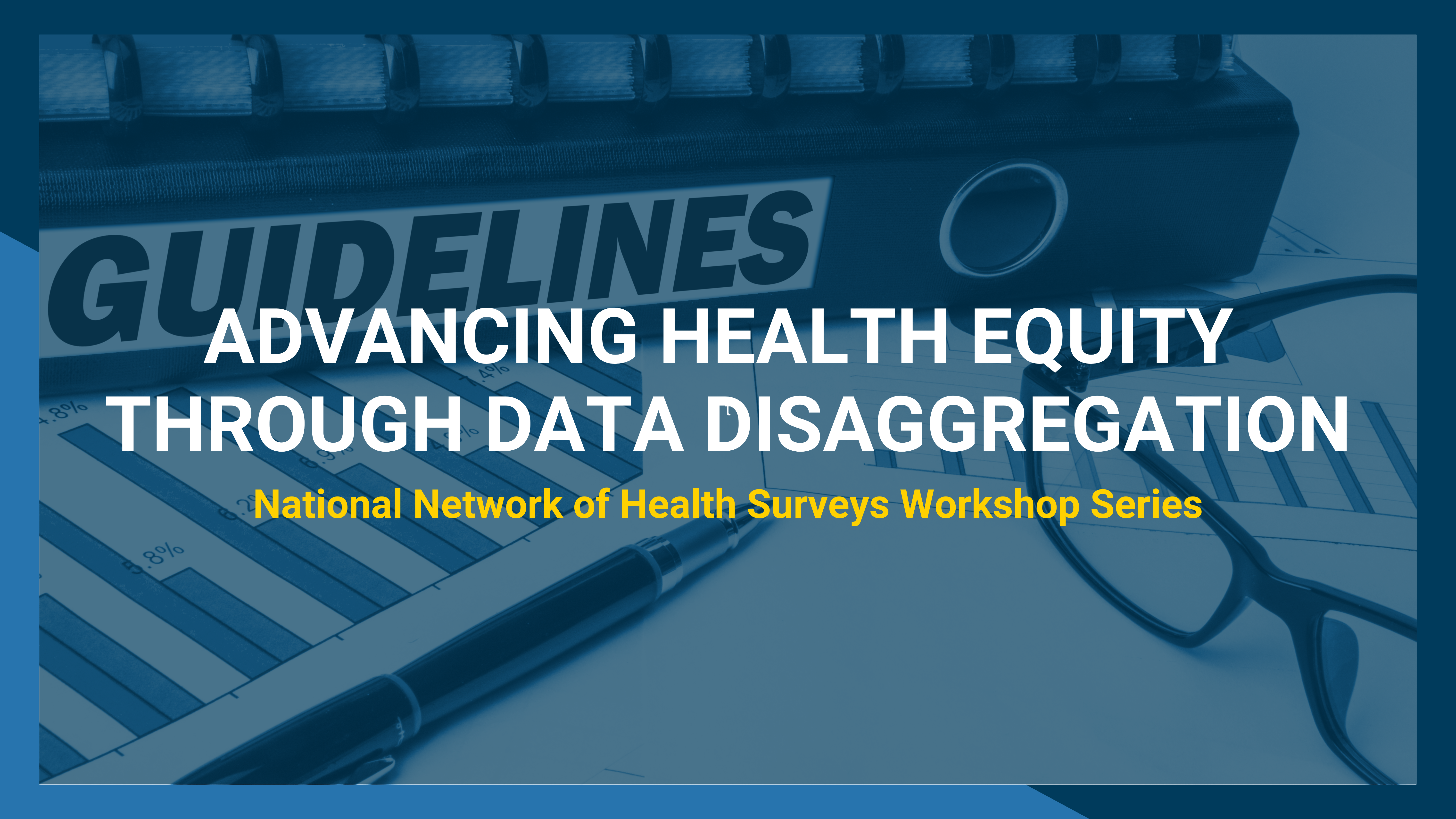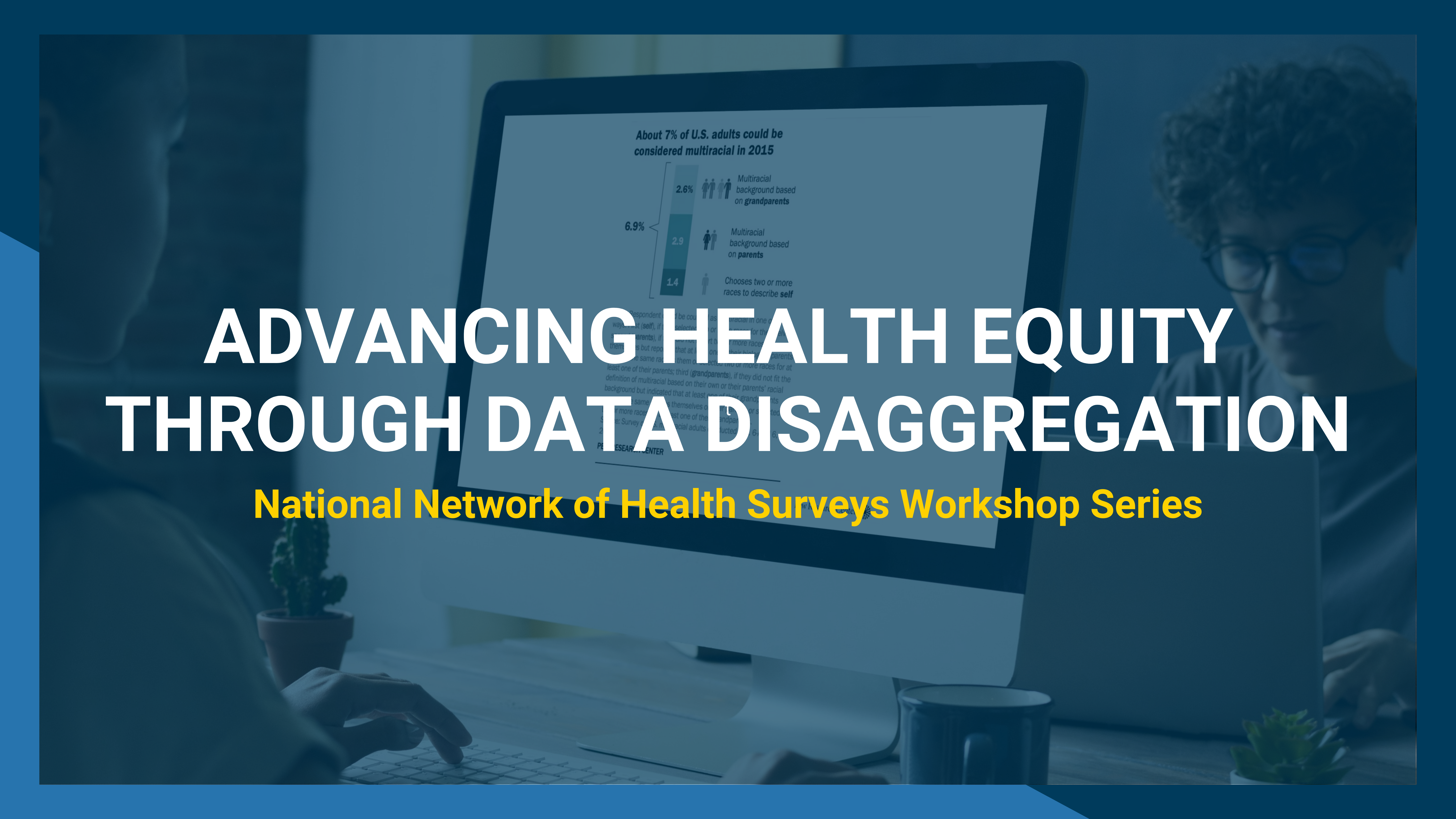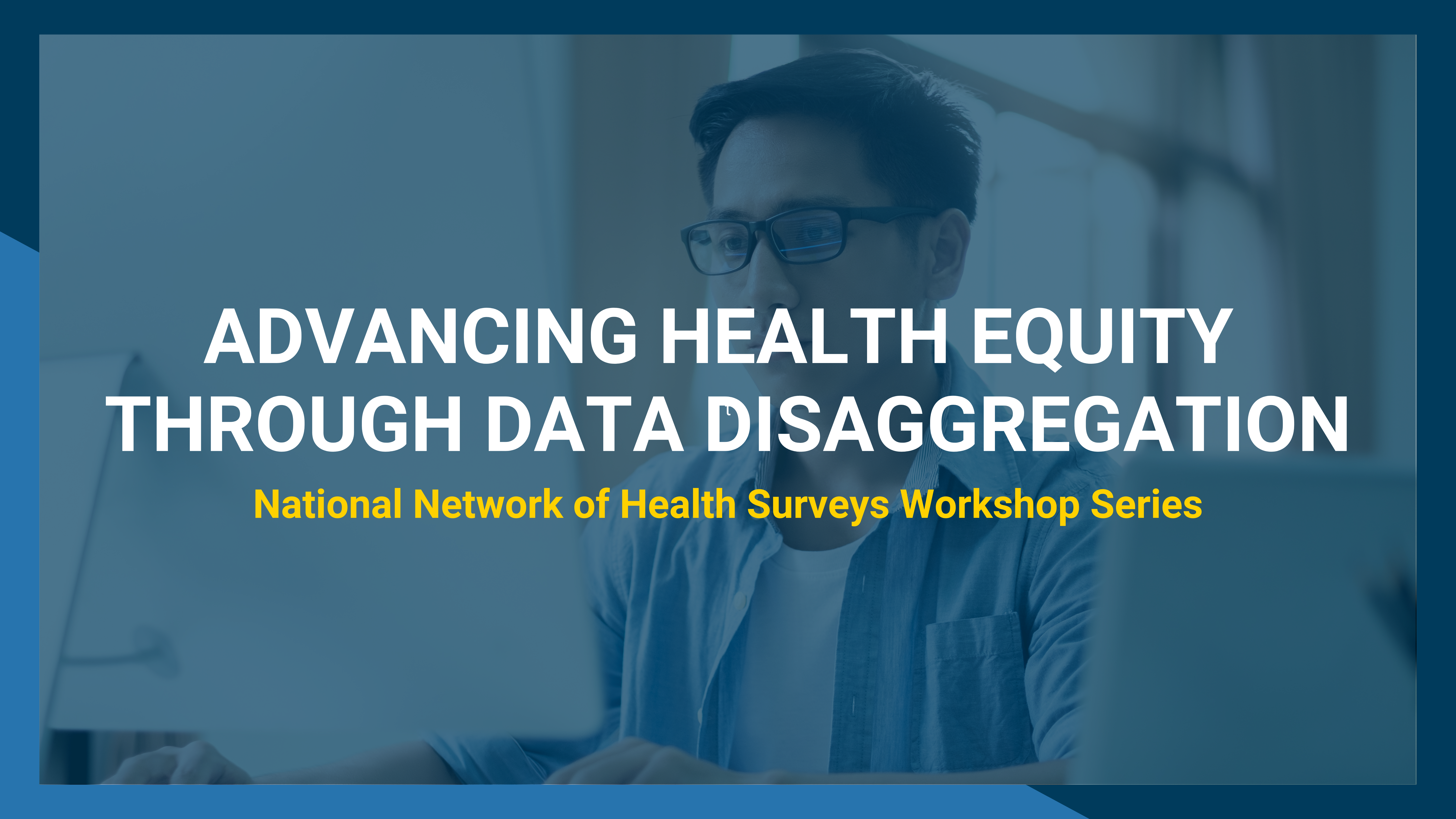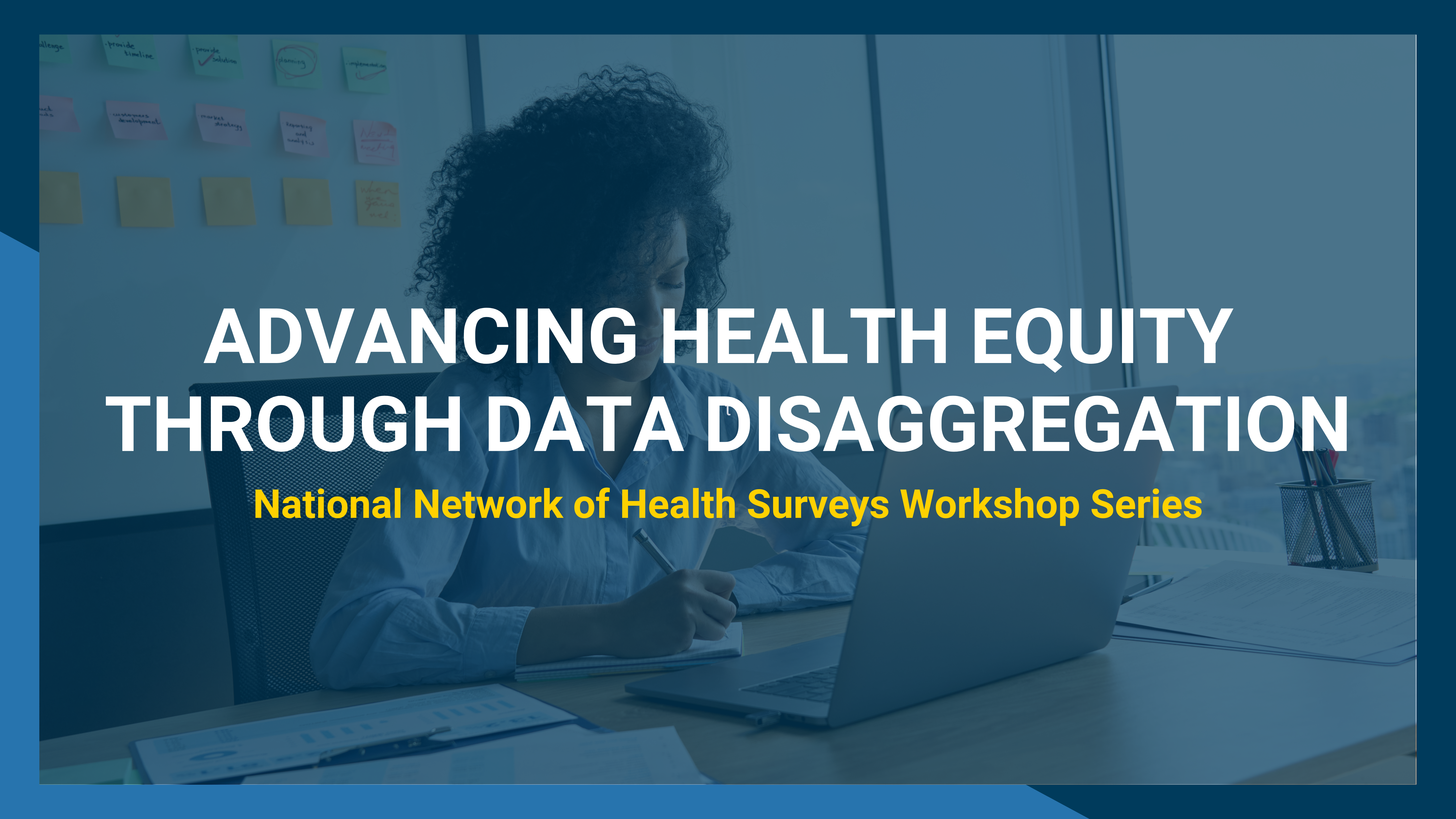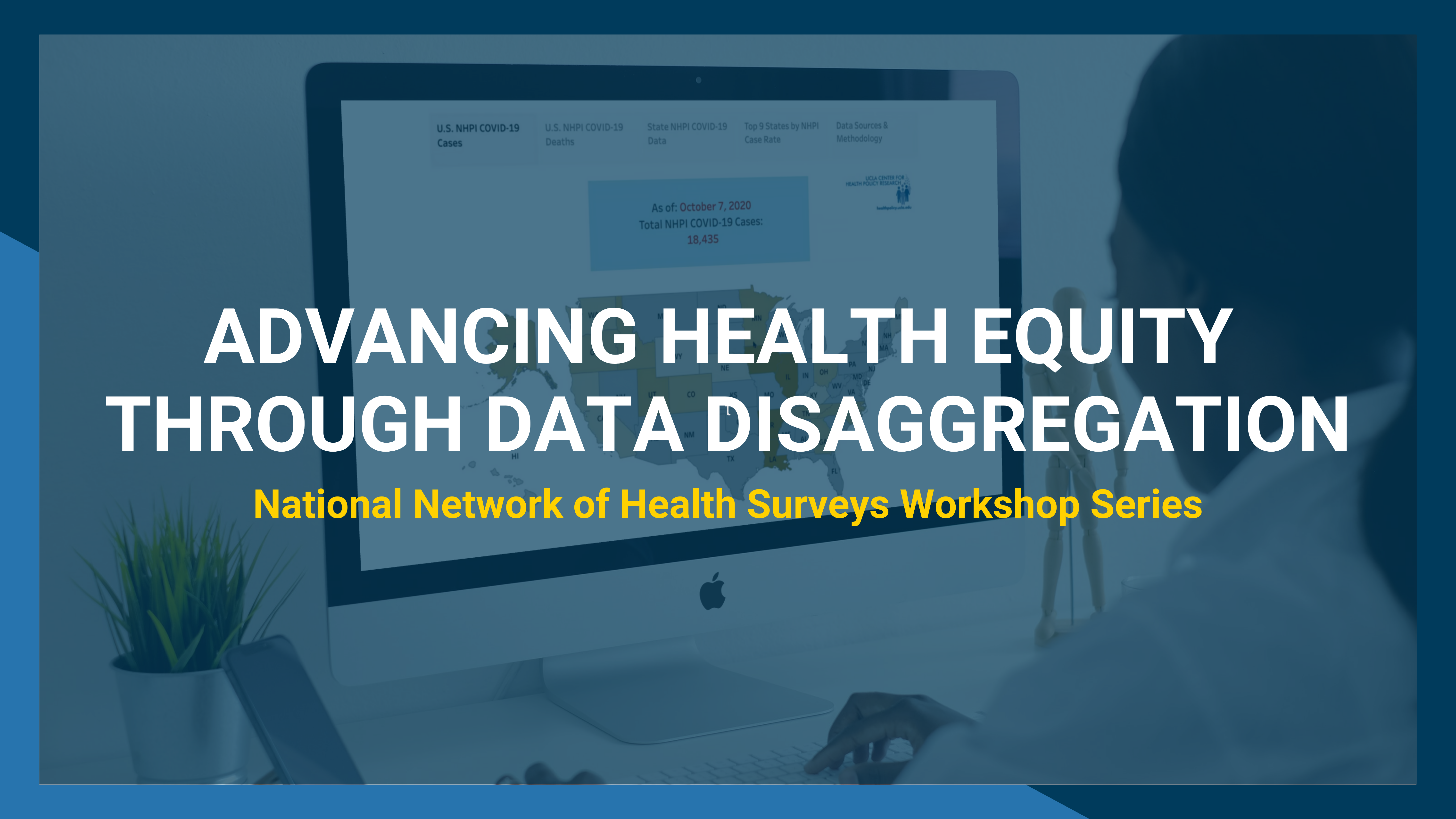Disaggregating Data Decision-making: Who, What, When?
PUBLISHED ON: AUGUST 31, 2021
On Tuesday, August 31, the National Network of Health Surveys hosted Disaggregating Racial/Ethnic Data Decision-making: Who, What, When?, a panel discussion on approaching the key considerations when choosing to expand racial/ethnic categories in health data sets. Presenters shared some of their decision-making on: Who: what categories to include? What: what question-wording gets at the information desired? When: what conditions should be present to trigger expanded racial/ethnic data disaggregation?
Presenters:
Samantha Artiga, Vice President and Director, Racial Equity and Health Policy Program, Kaiser Family Foundation
Joshua Quint, PhD, MPH, Epidemiologist, Disease Outbreak Control Division, Hawai’i Department of Health
Eva Wong, PhD, Epidemiologist, Public Health – Seattle & King County
The panel was moderated by UCLA CHPR Director Ninez A. Ponce, PhD, MPP
About the National Network of Health Surveys' Advancing Health Equity Through Data Disaggregation Workshop Series
Disaggregated race/ethnicity data is needed to expose gaps in health equities and inform policies and programs and close those gaps. The National Network of Health Surveys, part of the UCLA Center for Health Policy Research, offers a series of workshops designed to improve the disaggregation of race and ethnicity measures in health data sources. Our goal is to boost the number of subpopulation categories made available to key constituencies working to improve health equity. This is especially important for representing communities that are often “hidden” in large health data sets.
Files
Download the presentation slides.
Topics and Timestamps
Implications of Data Gaps and Limitations for Health Equity: Samantha Artiga, MHSA (8:45)
Comprehensive High-Quality Data is Central to Efforts to Advance Equity (10:21)
- Why is having disaggregated data important?
Gaps and Limitations in Racial/Ethnic Data (11:25)
- Understanding how gaps in data emerge and being able to identify them
Addressing Data Gaps and Limitations (15:05)
- Key considerations when addressing gaps in data
Strategies to Address Data Gaps (17:35)
Explanation of strategies utilized by the Kaiser Family Foundation Intentional Survey Design (17:37)
Partnering with Community (18:47)
Highlighting Missing Data (20:15)
Key Factors that Influence Data Disaggregation Efforts (20:55)
- Even with the best of intentions, what other factors can effect disaggregation efforts?
Disaggregating Race/Ethnicity COVID-19 Data for Hawai’i – Joshua Quint, PhD, MPH (23:31)
Principles of Epidemiological Analysis (25:39)
- Fundamentals of epidemiology as guiding factors in data disaggregation
Key Process Factors in Working with Target Populations (26:55)
- Process model for engagement with population
Explanation of Case Study – COVID-19 in Hawai’i (28:16)
- Establishing background (28:16)
- Identifying opportunities for disaggregation (31:30)
- Example of disaggregated public dashboard (32:03)
- Barriers encountered and strategies utilized (32:38)
- Working example of process model for engagement (34:11)
- Additional guiding principles, questions, and considerations of case study (35:09)
- Key outcomes (36:33)
- Scope of future work (37:03)
Data Disaggregation for Equity: Example from King County, WA – Eva Wong, PhD (42:25)
Importance of Equity and Community Involvement (44:29)
- Discussion of racism as a public health crisis, and how best to center equity
The BSK Health Survey (45:28)
- Participants and coding (46:01)
- Examples of equity in action (47:04)
- Presenting data by race (48:15)
- Adding categories based on write-in responses
- Why disaggregation matters (49:16)
- More key considerations in disaggregating (50:06)
- Accessing their dashboard (51:45)








